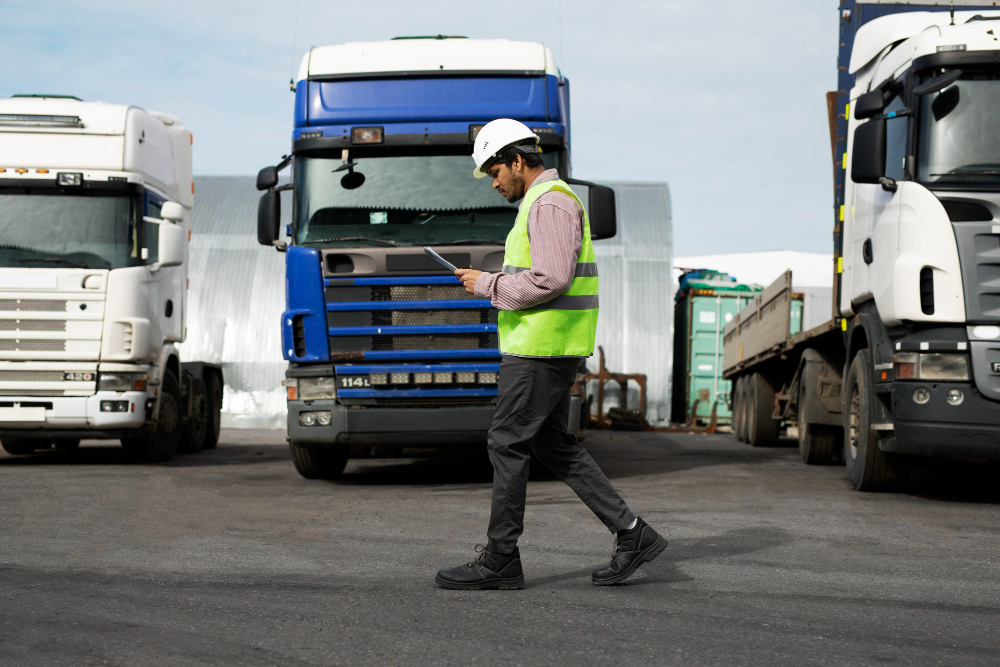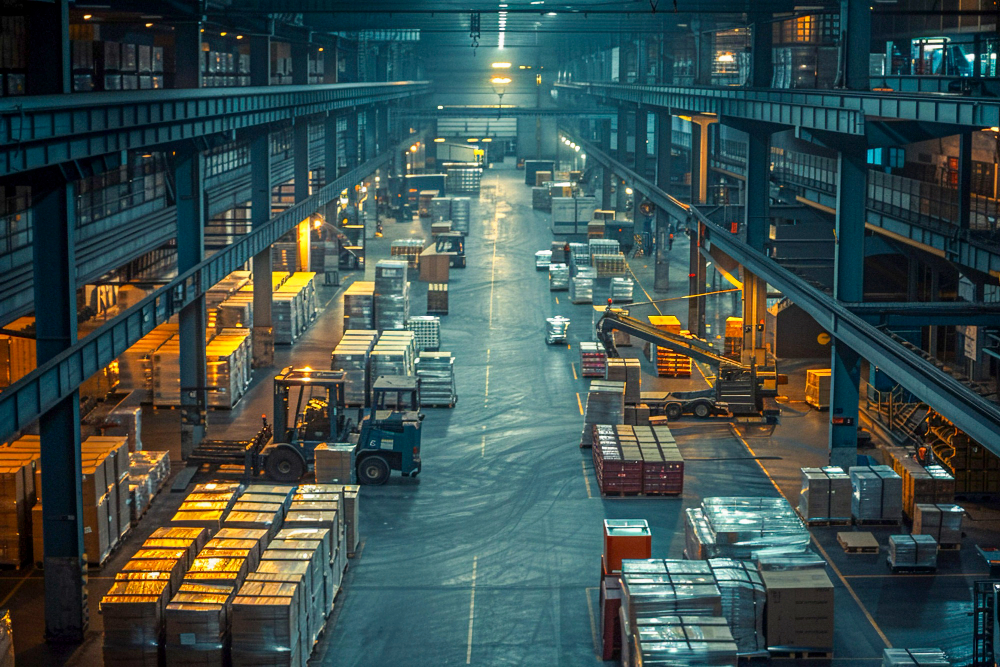The future of supply chains is green. In fact, the global green logistics market is projected to reach nearly USD 3.4 trillion by 2034, proving that sustainability is becoming the new standard for supply chains.
From skyrocketing fuel prices to growing consumer demand for eco-conscious brands, the logistics industry is at a crossroads. Companies that ignore sustainability risk are falling behind, while those that adopt green logistics strategies are setting themselves up for long-term success.
Table of Contents
Key Takeaways
✔ Green logistics reduces costs and carbon emissions through sustainable warehousing and transportation.
✔ Energy-efficient warehouses using smart layouts and automation drive eco-friendly operations.
✔ Sustainable transportation companies lead with EVs, alternative fuels, and optimized fleets.
✔ Smart packaging and on-demand delivery cut waste and improve last-mile efficiency.
✔ Businesses gain environmental, economic, and brand advantages by adopting sustainable logistics practices.
Sustainable Practices in Warehousing
Warehouses are the backbone of supply chains, but they are also energy-intensive. Transforming them through sustainable logistics principles can drastically improve efficiency while reducing environmental impact.
Energy Efficiency
Lighting, heating, and cooling are some of the biggest energy drains in warehousing. By adopting LED lighting, motion sensors, and solar panels, businesses can cut electricity costs while supporting green logistics. Smart HVAC systems and energy monitoring tools ensure warehouses use only what they need, helping companies align with sustainable logistics practices without sacrificing performance.
Green Building Materials
The design and materials of a warehouse directly influence sustainability. Facilities built with recycled steel, reclaimed wood, and low-emission concrete reduce embodied carbon. Certifications like LEED ensure warehouses meet global standards for sustainable logistics. These eco-friendly choices not only lower environmental impact but also attract clients seeking greener supply chain partners.
Waste Reduction
Waste management is a critical component of sustainable logistics practices. Warehouses can implement recycling programs, compost organic waste, and reuse packing materials. Beyond disposal, many businesses are adopting circular economy models, finding new uses for items once considered waste. By focusing on waste reduction, companies practicing green logistics keep materials in circulation longer and reduce landfill dependency.
Space Optimization
Efficient use of space leads to lower energy needs. Vertical storage, modular shelving, and optimized warehouse layouts allow businesses to store more while using fewer resources. Smart layouts reduce unnecessary movement, lower electricity use for lighting and automation, and contribute to sustainable logistics.
Efficient Automation
Automation powered by AI and robotics supports efficiency while reducing waste. Automated guided vehicles (AGVs), AI-driven inventory systems, and robotics improve picking accuracy, cut idle energy use, and minimize labor costs. These innovations showcase how technology and sustainable logistics practices work hand in hand to build eco-friendly supply chains.

Sustainable Practices in Transportation
Since freight and warehousing already account for more than 7% of worldwide GHG emissions, rethinking transportation strategies is one of the fastest ways to reduce environmental impact. By embracing green logistics strategies, businesses can modernize fleets, reduce fuel consumption, and partner with sustainable transportation companies that lead the charge in eco-friendly mobility.
Alternative Fuels and Electric Vehicles (EVs)
One of the fastest-growing trends is the adoption of electric trucks and vehicles powered by biofuels or hydrogen. These fleets emit fewer greenhouse gases and reduce dependency on fossil fuels. Sustainable transportation companies investing in EV infrastructure are becoming preferred partners for businesses pursuing sustainable logistics.
Route Optimization
Every unnecessary mile traveled adds to costs and carbon emissions. Advanced route optimization software uses AI, GPS, and real-time data to minimize fuel usage. This not only reduces environmental impact but also ensures sustainable logistics practices remain cost-efficient.
Fleet Optimization
Regular fleet maintenance, smart telematics, and driver performance tracking help businesses maximize vehicle efficiency. Fleet optimization ensures vehicles use less fuel, last longer, and align with green logistics goals. Many sustainable transportation companies use these tools to showcase measurable sustainability improvements.
Smart Packaging
Packaging often goes overlooked, but it plays a huge role in sustainability. Biodegradable, lightweight, and space-efficient packaging means fewer trips and reduced emissions. By designing smarter packaging strategies, businesses can directly support sustainable logistics.
On-Demand Delivery
On-demand delivery solutions like micro-fulfillment centers, crowdsourced delivery, and batch shipments eliminate wasted trips. These approaches, often pioneered by sustainable transportation companies, streamline the last mile while reducing idle emissions.
Modal Shifts
Diversifying transportation modes makes logistics more flexible and eco-friendly. Rail and sea freight typically produce fewer emissions than road transport. Smart modal shifts allow companies to balance speed, cost, and sustainability, making it a core strategy in green logistics.
Overall Benefits of Green Logistics
Adopting sustainable logistics practices doesn’t just protect the environment — it delivers long-term business value.
Reduced Environmental Impact
By cutting emissions, reducing waste, and lowering energy usage, companies help preserve natural resources while addressing consumer concerns about climate change.
Economic Advantages
Energy efficiency, fuel savings, and waste reduction translate directly into lower operating costs. Businesses using sustainable logistics can save money while growing sustainably.
Enhanced Brand Image
Customers increasingly prefer eco-conscious brands. Partnering with sustainable transportation companies demonstrates environmental responsibility and strengthens brand loyalty.
Improved Resource Management
With better tracking of energy, fuel, and space, businesses gain more control over resources. This leads to streamlined operations and a resilient supply chain built on green logistics.
Frequently Asked Questions (FAQs)
What industries can benefit most from green logistics?
Retail, e-commerce, manufacturing, and healthcare gain the most from green logistics since they depend heavily on warehousing and transportation.
How do sustainable transportation companies measure their environmental impact?
Sustainable transportation companies track emissions and fuel use with telematics and carbon reporting tools to prove their sustainable logistics results.
Is green logistics expensive to implement for small businesses?
Upfront costs exist, but green logistics often saves money long-term through lower energy bills, incentives, and partnerships with sustainable transportation companies.
Can sustainable logistics practices improve customer satisfaction?
Yes—adopting sustainable logistics practices like eco-packaging and greener deliveries appeals to eco-conscious customers and boosts loyalty.
What role does technology play in advancing sustainable logistics?
Technology enables green logistics through route optimization, automation, and fleet management, helping sustainable transportation companies cut costs and emissions.

Take Action with Green Logistics for a Sustainable Future
Green logistics is no longer optional — it’s a necessity for modern businesses. By partnering with sustainable transportation companies, businesses can reduce costs, improve efficiency, and build a reputation as eco-conscious leaders.
Ready to make your supply chain greener and more efficient? Contact 3PL Warehouse By Best in New York, NY, today.

